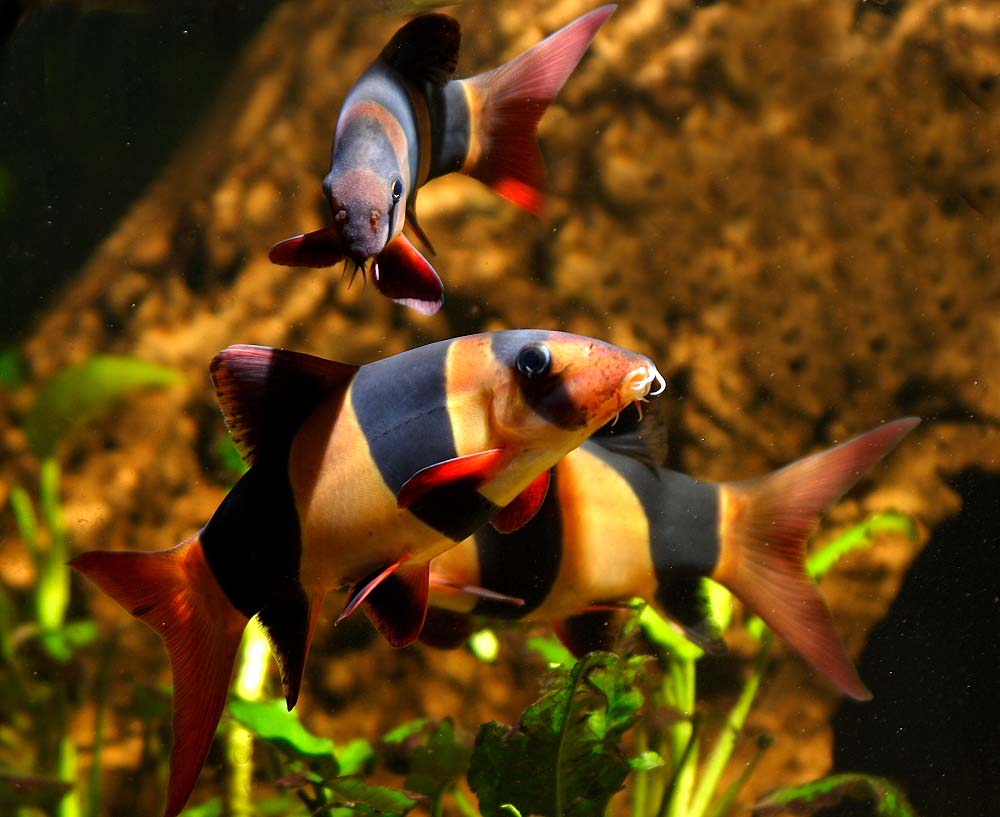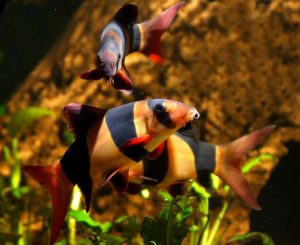

An extremely popular addition to a Tropical Community tank or an African Cichlid tank is the unusual Clown Loach. Clown Loaches feature a long and laterally compressed body with an arched dorsal fin and four pairs of barbels. The main body is reddish orange in colour with three wide vertical black bands. Its mouth faces downwards and has fleshy lips.
Common Name(s) : Clown Loach
Family : Cobitidae
Subfamily : Botiinae
Genus: Chromobotia
Species : Chromobotia macracanthus
Origin : Asia – Indonesia, Sumatra, Borneo
PH : 6.5 – 8.0
Hardness : Adaptable from soft to hard
Temperature : 24 – 28°C / 75–82°F
Maximum Size : 40cm / 16″
Lifespan : 15 years
Aggression Level : Low-Medium (3.5/10)
Recommended Tank Size : 100 Litres +
Strata : Bottom
TANK SET UP
Most importantly – ensure you have adequate filtration for your Clown Loach setup. These fish require clean water, some enthusiasts do small partial water changes on a weekly basis.
Clown Loaches will hide (quite comically if you have enough of them its a bit like the 20 clowns coming out of a car!) so you will need to provide them an area of cover all to themselves.
Clown Loaches will famously dig up bunch plants, frustratingly plants and Clown Loaches look great together. Your best bet is to add some driftwood plants as the loaches cannot dig them up. In addition other cover such as caves, rocks or ornaments would definately be an advantage in keeping these fish.
SUITABLE TANK MATES
- Tropical Fish
- Dwarf Cichlids
- African Cichlids
DIET
Omnivores, we feed our Clown Loaches bloodworm, flake food and occassionaly drop in a piece of cucumber tied to a plant anchor (a flexible weight) where they are only too happy to tuck into the softer fleshy part inside the skin. They will also eat live brine shrimp, live blackworm, sinking pellets or tropical crisps.
SEXING AND BREEDING
Clown Loaches are sexually almost identical . A closer look will reveal that females tend to be plumper while males tips of their tails curve inwards slightly. This is more obvious in larger specimens.
Clown Loaches are egglayers, however it is highly unlikely that these fish will spawn in an aquarium and only minimal events have so far been recorded – with one of these events being documented as involving extremely large specimens.

Leave a Reply
You must be logged in to post a comment.